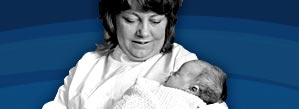Would you believe it?
Fact 1
Burying three quart jugs* of a patient's urine was once regarded as a cure for kidney disease.
Fact 2
Most nurses in the 19th century workhouses collected their wages in beer.
Fact 3
At a news conference in 1954 on the first report linking smoking with cancer, Health Minister Iain McLeod chained smoked throughout.
Fact 4
Staphylococcus aureus is the most common source of staph infections. But the name, first coined in Aberdeen, means something quite different – a golden bunch of grapes.
Fact 5
The recommended cure for acute stomach ache in the 1700s was juice pressed from the dung of an ox.
Fact 6
Penicillin was so scarce at the outset of the NHS that it was recovered from the patient's urine to be used again. An acutely ill boy in Dumfries was saved by injections of the new drug and was supplied with ten large jars to be returned to Glasgow for removal of the drug.
Fact 7
Chilean dictator, General Augusto Pinochet was treated as an ordinary patient at the Western General in Edinburgh in October 1996. His doctor was a personal friend of an Edinburgh consultant and was worried about a lung complaint on a visit to Britain. The General was registered under his first two names Augusto Ugarte, given some routine tests and sent to a chemist in Shandwick Place for a non-prescription medication.
Fact 8
90% of all healthcare in Scotland is delivered in a non-hospital setting. NHS Scotland manages the care of patients with long-term conditions, such as diabetes, from patient's homes.
Fact 9
In 1954 Richard Wilson started working in the health service as a lab technician in Stobhill Hospital mostly helping to diagnose TB before moving to the haematology department in Gateside Hospital, Greenock.
Fact 10
The NHS now spends around 25 times more money (over £1000 million) on drugs than it did to run the entire health service in 1949 (£41.9 million).
Fact 11
The NHS is Scotland's largest employer with a virtually limitless list of occupations. In 1975 that included 55 cabinet makers, 6 farm managers, 2468 porters, 742 sewing maids and tailors, 466 gardeners and 82 hairdressers!
Fact 12
The Queen Mother was flown down by helicopter from her Caithness home at Castle of Mey to Aberdeen Royal Infirmary after a fish bone was stuck in her throat. And the vital question for waiting media the following morning was – What did she have for breakfast?
Fact 13
James Robertson Justice, the Scottish actor who was the scourge of junior surgeons as Sir Lancelot Spratt in the Doctor films always did his homework. Through his friend, Bruce Dewar, he sat in on operating sessions at Dumfries and Galloway Royal Infirmary watching surgeon John Neilson and his team at work.
Fact 14
Bobby Moore, England's 1966 World Cup-winning captain, was treated at the Western General in Edinburgh for bowel cancer. Once a fortnight he would fly up for treatment in an ordinary ward. Taxi drivers, nurses, doctors and other patients recognised him and he happily signed autographs. But not one single person ever spilled the beans to the press. He died in 1993. Touched by this loyalty, his family gave the first cheque from the research fund set up in his memory to the Western General.
There were 1.55 million A&E visits in Scotland in 2006/2007 – a significant 50,000 rise on the previous year.
In the first year of the NHS 15 million prescriptions were dispensed at a total cost of £2.75 million.
